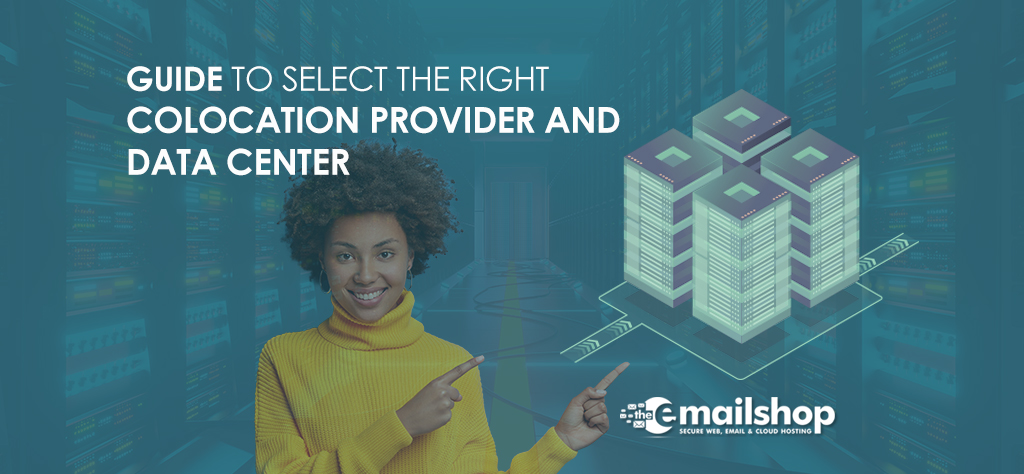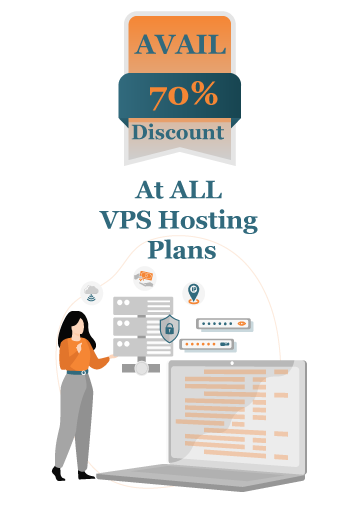Many companies are opting to relocate their information technology infrastructure to third-party data centers that are run by colocation providers. This decision is being made for a variety of reasons, including personnel, finances and resources, disaster recovery planning, or simply the desire to concentrate on core competencies. Hosting mission-critical computers and storage in on-premise telecom closets and data centers is a disadvantage that may be mitigated by using colocation as an alternative.
The vast majority of companies have realized that constructing their own data centers would not fulfill their needs for availability, reliability, connection, and power, all of which are essential to their IT plans as well as their business goals. In addition, moving servers to a colocation facility may reduce the amount of money spent on capital expenses, improve their level of dependability, make administration more straightforward, and reduce the amount of personnel needed to maintain and solve typical data center infrastructure activities. However, choosing to move from an on-premises data center configuration to an off-premises colocation data center might be a difficult choice to make. Even entertaining the idea of moving servers, storage, and networking infrastructure requires extensive preparation and careful analysis. When it comes to moving a data center, one of the most common challenges is overcoming people’s natural resistance to change.
When a business has finally made the decision to make the switch, it is imperative that they have a well-thought-out plan for selecting the most suitable colocation provider, data center facilities, and services for remotely maintaining their equipment. Companies have to take five crucial elements into account before they can select which strategy would best meet their company’s requirements and objectives.
State your goals and objectives clearly
Both the data center and the underlying technologies are supported by the technology that helps businesses achieve their objectives. As a result, companies should be clear about their long-term objectives and what those goals mean for everyone who is connected to technology. The strategy for the data center may be affected in many ways depending on the aims and objectives of the various departments.
The first thing that needs to be done is to make sure that everyone is on the same page. That involves figuring out who all of the relevant parties are. It is essential to have a wide range of personnel from different backgrounds who are able to provide input on the company’s overall strategy, goals, and aims. This group of staff members needs to include senior management in addition to subject matter specialists like DevOps, SysOps and SecOps, administrators, and software developers. This guarantees that each and every viewpoint and potential situation for using a data center are investigated. For example, those in charge may not know about the problems that technicians face, like not having the right tools for network monitoring and alerting.
The objectives that stakeholders wish to accomplish should be more long-term and comprehensive in nature, such as increasing the amount of time a data center is operational or decreasing the amount of time spent managing it. Their objectives are short-term milestones that must complement each of their goals, be quantifiable, and have specific start-to-finish deadlines in order to be considered successful. After that, each stakeholder is responsible for giving each of these goals a level of importance in terms of meeting the overall goals.
After conducting the interviews and determining the aims and objectives, the very next stage is to gather all of the stakeholders in the project together and reach a consensus about the goals and objectives that are most significant in relation to the data center. The group may then discuss the strategic execution of how these aims and objectives might be achieved, laying the foundation for an all-encompassing data center strategy.
You Might Also Like to Read: How Geography Matters When Choosing Colocation Data Center
Conduct research on colocation service providers and data centers
When the aims and objectives of the project have been outlined, the next topic of conversation should be the procedure to be followed when choosing a colocation provider and a data center facility. The amount of assistance that colocation providers provide their customers may range from minimal to comprehensive. This varies from the most basic requirements, such as power, rack space, and connection, all the way up to fully managed colocation services.
When picking a colocation data center, location is another important factor to take into account. What exactly are we trying to accomplish by moving the data center? These objectives go back to the aims and objectives that were outlined before. Is business continuity planning your primary motivation for moving to a colocation facility? If this is the case, the location of the data center can be in a different city or even a different state. The majority of companies search for colocation providers and data centers that are situated close to their headquarters or branch offices if reliability or performance are their primary concerns. In this particular scenario, the proximity to the IT workers who are responsible for controlling the hardware should be within a driving distance that is considered to be fair.
There are many different kinds of data center facilities available. There is a wide variety of data center infrastructure, ranging from that which has been purpose-built to that which has been retrofitted, and from a single story to many stories. There are also many tier levels, each of which represents the number of redundant systems that have been constructed inside the data center. The high availability institute assigns a rating of between one and four stars to each data center facility. A Tier I data center has the lowest possible uptime and level of redundancy, while a Tier IV data center has the best possible uptime and level of redundancy. The redundancy of the data center is a significant factor in determining the amount of projected downtime per year. The easiest approach to evaluating the capabilities of different data centers is to schedule a tour of each one.
The connection choices available at the data center facilities that are of interest to businesses may also be a factor in their decision-making. This consists of on-net telecom carriers, Internet service providers (ISPs), and network providers that are already incorporated into the architecture of the network. In addition, direct cloud access to major cloud providers, such as Amazon Web Services (AWS), Google Cloud, Microsoft Azure, and IBM Cloud, will be an essential factor in the decision-making process.
Last but not least, many companies will think about the overall budget they have set up for how much money they want to spend on colocation services. It is also essential to take into consideration the terms of the contract. How long is the term? One, two, three, or five years? What are the long-term forces driving technological advancement? The question is whether the company will focus on a hybrid infrastructure strategy or whether, by a certain date, it will move all of its operations to the cloud.
Define and Draft Your Colocation Request for Proposal
It is time to prepare a request for proposal now that you have selected the top candidates for the roles of colocation providers and data centers on your shortlist (RFP). The goal of a request for proposal (RFP) is to get replies and responses that are uniform from each of the suppliers. This makes it possible to compare two different things side by side and gives your company and its executives the ability to negotiate depending on the replies. In order to choose the correct colocation provider, it is vital to construct a request for proposal (RFP) that covers your unique business needs.
What elements make up a request for proposals for colocation? In addition to background information about the organization, a request for proposal (RFP) offers detailed guidelines on what information suppliers should include in their submissions. This may include needs that are required by law, a rough estimate of the initial variety of cabinets, and the amount of power required to support both the current and future requirements for expansion.
In addition, it is essential to provide colocation providers the ability to define all areas of their product, such as their electrical infrastructure and the way they deal with deliveries. The RFP should also have questions about price and terms, examples of agreements, compliance, and certifications, among other things.
Analyze the Responses to the RFP and the Proposals
It’s possible that evaluating the answers from service providers may take even longer than developing criteria and crafting the RFP. When you have gotten all of the replies, it is important to conduct comparisons that are like-for-like in order to identify the most suitable colocation provider for your company’s technological and commercial needs.
This might be a difficult process. What criteria do you use to evaluate each of the service providers? Which one is the most advantageous? The creation of a weighted score matrix is one method that may be used to compare each answer. Creating a matrix spreadsheet with all of the finalist colocation provider companies and the questions from the RFP is one way to accomplish this goal. The questions that each colocation provider responded to are used to generate a score for them.
Another method for contrasting service providers is to inquire further with the purpose of gaining clarity. You may have a better understanding of atypical bids, service offers, and pricing if you ask follow-up questions. There is a possibility that certain service providers may offer extra services or suggestions. It is essential to have a solid understanding of the distinctions.
At this stage of the process, collaboration between the many players and decision markets is very necessary. Be careful to include them in the process when new ideas are presented. Also, please make sure the matrix or a summary of the answers to the RFP is shared.
The Selection of the Finalists and the Negotiation Process
You are down to choosing between one and maybe two potential colocation providers. The next item on your to-do list should be the negotiation of price and conditions. The request for proposals (RFP) procedure for colocation gives you the opportunity to evaluate suppliers and services on an equal footing. In addition to this, it provides the power to negotiate the terms and price of the service offered in question.
At this stage, you are able to make requests for contracts and confirm pricing. Be sure to give the contracts a good read through and, if at all feasible, consult with legal counsel for a review and to draw up redlines. Bring to light any potential stumbling blocks in the contracts, such as automatic renewals, service level agreements (SLAs), initial deposits, move-in dates, and the duration of the contract, among other specifics. The vast majority of colocation service providers can change contracts to meet the needs of their customers.
Negotiation is also an option for the final price. While some service providers are willing to negotiate prices, others are not. In addition to this, you need to think about the facilities of the data center and the distinctions between them, such as their tier levels and locations.
For Discount and Offers, Visit our Official Facebook Page









